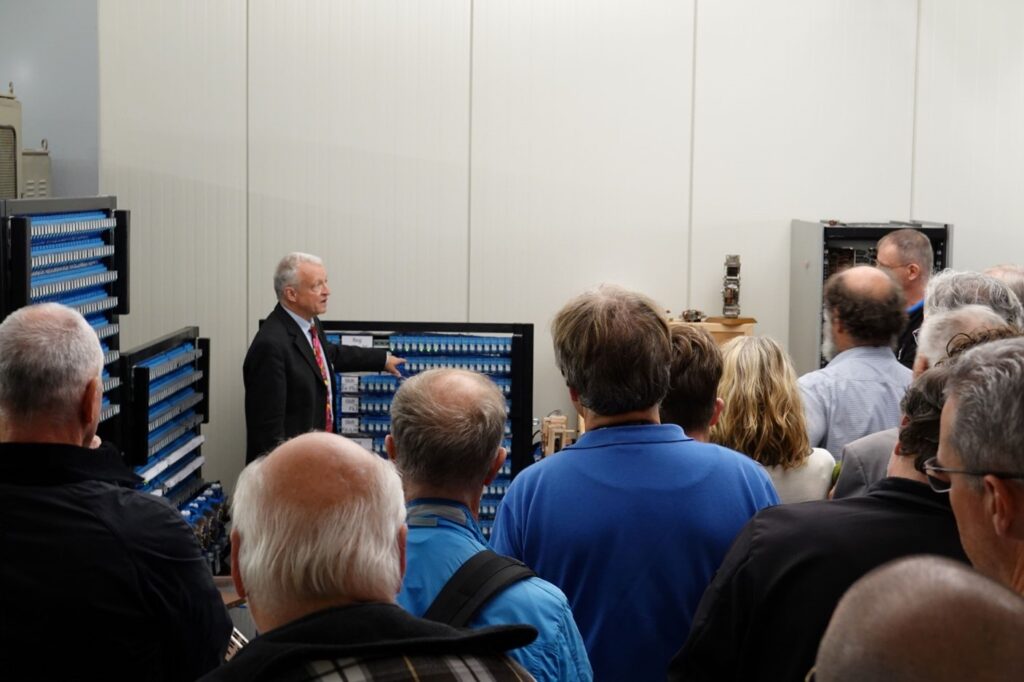IEEE Life Member Event: Konrad Zuse and Switzerland
Abstract
IEEE Life members were invited on 28 September 2024, at the ENTER Technikwelt in Derendingen, Solothurn, for a two-part event. 26 IEEE members attended in addition to many friends of the ENTER museum.
First, Dr. Horst Zuse, presented his father’s contributions to the early computer developments, followed by a description of the collaboration of Konrad Zuse, with ETH in Zurich and with Swiss companies, after WWII.

In the second part, Dr. Christof Traber, demonstrated the operation of the working replica of the Zuse Z3 computer, that he built. This machine is at the ENTER museum.

Summary
Dr. Horst Zuse, son of Konrad Zuse, explained that his father as a civil engineer wanted to develop computing machines to solve classic mathematical calculations. The first developments are well described elsewhere [1] [2], starting with the Z1 mechanical computer. The Z3 electromechanical computer was completed in May 1941. It included 2,600 relays [3]. It was mentioned that tubes were not made available to Zuse during WWII and that relays were more reliable for continuous operation until the 1950’s. Interestingly, this machine performed binary calculations with 22-bit floating-point numbers, data input/output was decimal, and a program can be executed from a 35mm film punched with 8-bit binary code.
The Z4 computer is the key element of this talk about Konrad Zuse work with Switzerland. At the end of WWII, Konrad Zuse moved from Berlin to the Alps close to Austria to save the Z4 machine that he just completed [4]. After hard economic times, Zuse noticed interest in his machines and founded the company Zuse KG in 1949. The Z4 was leased by ETH Zürich in 1950, under the direction of Prof. Eduard Stiefel. It was the first operating computer on continental Europe and performed there reliably for 5 years, before being shipped to nearby St-Louis in France. This was the foundation of the computer science department at ETHZ.
Commercial success followed: Z5 was built for Leitz optical company in Germany and Z8 for Geigy pharmaceutical company. Remington Rand from the US founded a company in Zurich called Mitra to sell the Z9 computer under the M9 name. 25 units were built by Zuse and sold to Swiss customers. Interestingly, the M9 included a multiplication accelerator described as “pipeline” in a Zuse patent from 1949.
Dr. Horst Zuse also presented his father’s passion for painting.
The demonstration of the working replica of the Z3 computer by its builder, Dr. Christof Traber was a real-life experience of these relay machines for all participants. Currently, the Z3 at ENTER museum is the only fully functional and fully electromechanical replica. It was demonstrated using the console and by using punched 35-mm film program like the original.
IEEE Life Members of Switzerland thank the team of the ENTER museum and its founder Felix Kunz for organizing this very interesting event.
Michel Bron
IEEE Life Senior Member
References
[1] ZIB Zuse Institute Berlin https://www.zib.de/institute/konrad-zuse
[2] Wikipedia https://en.wikipedia.org/wiki/Konrad_Zuse
[3] Wikipedia https://en.wikipedia.org/wiki/Z3_(computer)
[4] Wikipedia https://en.wikipedia.org/wiki/Z4_(computer)
